Concept explainers
a)
To determine: Determine the UCL and LCL if the
Introduction: Control charts used to determine whether the process is under control or not. Attributes and variables are the factors under the control charts.
a)
Answer to Problem 13P
Hence, the UCL is 0.05145 and LCL is 0.
Explanation of Solution
Given information:
Defect rate is given as 1.5%.
Determine the UCL and LCL if the sample size is 100 and 3-sigma limits:
Here,
z refers to the number of standard deviation for setting the limit. Here, it is 3-sigma limit.
Calculate the value of the standard deviation of the sampling distribution
The given values of
Hence, the standard deviation of the sampling distribution
The given values of
Hence, the upper control chart limit
The given values of
Hence, lower control chart limit cannot be negative therefore
b)
To determine: Determine the UCL and LCL if the sample size is 50 and 3-sigma limits.
Introduction: Control charts used to determine whether the process is under control or not. Attributes and variables are the factors under the control charts.
b)
Answer to Problem 13P
Hence, the UCL is 0.06657 and LCL is 0.
Explanation of Solution
Given information:
Defect rate is given as 1.5%.
Determine the UCL and LCL if the sample size is 50 and 3-sigma limits:
Here,
z refers to the number of standard deviation for setting the limit. Here, it is 3-sigma limit.
Calculate the value of the standard deviation of the sampling distribution
The given values of
Hence, the standard deviation of the sampling distribution
The given values of
Hence, the upper control chart limit
The given values of
Hence, lower control chart limit cannot be negative therefore
c)
To determine: Determine the UCL and LCL if the sample size is 100 and 2-sigma limits.
Introduction: Control charts used to determine whether the process is under control or not. Attributes and variables are the factors under the control charts.
c)
Answer to Problem 13P
Hence, the UCL is 0.0393 and LCL is 0.
Explanation of Solution
Given information:
Defect rate is given as 1.5%.
Determine the UCL and LCL if the sample size is 100 and 2-sigma limits:
Here,
z refers to the number of standard deviation for setting the limit. Here, it is 2-sigma limit.
Calculate the value of the standard deviation of the sampling distribution
The given values of
Hence, the standard deviation of the sampling distribution
The given values of
Hence, the upper control chart limit
The given values of
Hence, lower control chart limit cannot be negative therefore
d)
To determine: Determine the UCL and LCL if the sample size is 50 and 2-sigma limits.
Introduction: Control charts used to determine whether the process is under control or not. Attributes and variables are the factors under the control charts.
d)
Answer to Problem 13P
Hence, the UCL is 0.04938 and LCL is 0.
Explanation of Solution
Given information:
Defect rate is given as 1.5%.
Determine the UCL and LCL if the sample size is 50 and 2-sigma limits:
Here,
z refers to the number of standard deviation for setting the limit. Here, it is 2-sigma limit.
Calculate the value of the standard deviation of the sampling distribution
The given values of
Hence, the standard deviation of the sampling distribution
The given values of
Hence, the upper control chart limit
The given values of
Hence, lower control chart limit cannot be negative therefore
e)
To determine: What happen to
Introduction: Control charts used to determine whether the process is under control or not. Attributes and variables are the factors under the control charts.
e)
Explanation of Solution
Determine what happen to
The standard deviation of the sampling distribution
f)
To determine: Why LCL cannot be less than 0.
Introduction: Control charts used to determine whether the process is under control or not. Attributes and variables are the factors under the control charts.
f)
Explanation of Solution
Determine why LCL cannot be less than 0:
The lower control limit for defectives cannot be less than zero because it becomes negative. A negative lower control limit is meaningless.
Want to see more full solutions like this?
Chapter 6 Solutions
Principles Of Operations Management
 Practical Management ScienceOperations ManagementISBN:9781337406659Author:WINSTON, Wayne L.Publisher:Cengage,
Practical Management ScienceOperations ManagementISBN:9781337406659Author:WINSTON, Wayne L.Publisher:Cengage, Operations ManagementOperations ManagementISBN:9781259667473Author:William J StevensonPublisher:McGraw-Hill Education
Operations ManagementOperations ManagementISBN:9781259667473Author:William J StevensonPublisher:McGraw-Hill Education Operations and Supply Chain Management (Mcgraw-hi...Operations ManagementISBN:9781259666100Author:F. Robert Jacobs, Richard B ChasePublisher:McGraw-Hill Education
Operations and Supply Chain Management (Mcgraw-hi...Operations ManagementISBN:9781259666100Author:F. Robert Jacobs, Richard B ChasePublisher:McGraw-Hill Education
 Purchasing and Supply Chain ManagementOperations ManagementISBN:9781285869681Author:Robert M. Monczka, Robert B. Handfield, Larry C. Giunipero, James L. PattersonPublisher:Cengage Learning
Purchasing and Supply Chain ManagementOperations ManagementISBN:9781285869681Author:Robert M. Monczka, Robert B. Handfield, Larry C. Giunipero, James L. PattersonPublisher:Cengage Learning Production and Operations Analysis, Seventh Editi...Operations ManagementISBN:9781478623069Author:Steven Nahmias, Tava Lennon OlsenPublisher:Waveland Press, Inc.
Production and Operations Analysis, Seventh Editi...Operations ManagementISBN:9781478623069Author:Steven Nahmias, Tava Lennon OlsenPublisher:Waveland Press, Inc.





